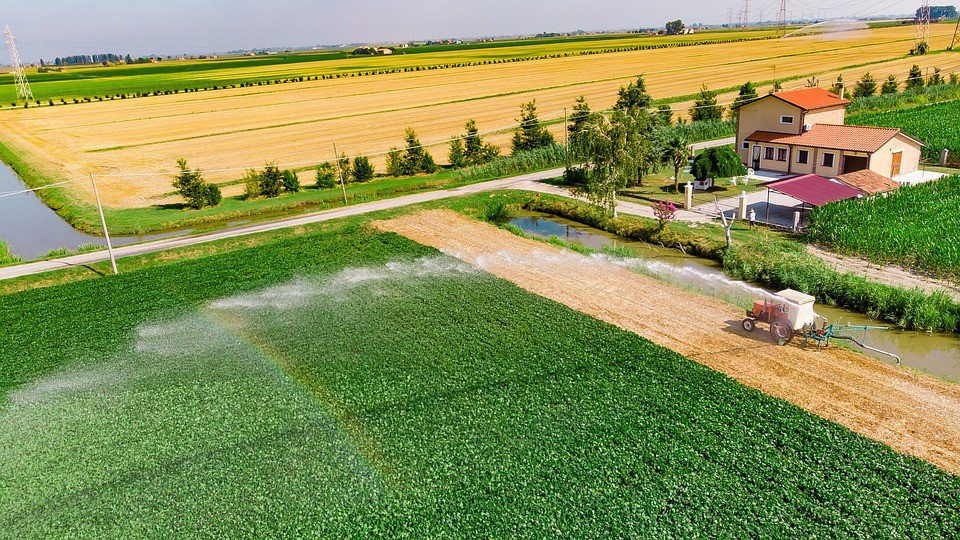Irrigation alters water recycling across the United States
Submitter
Fast, Jerome D
— Pacific Northwest National Laboratory
Area of Research
Surface Properties
Journal Reference
Yang Z, Y Qian, Y Liu, L Berg, H Hu, F Dominguez, B Yang, Z Feng, W Gustafson, M Huang, and Q Tang. 2019. "Irrigation Impact on Water and Energy Cycle during Dry Years over the United States Using Convection‐Permitting WRF and a Dynamical Recycling Model." Journal of Geophysical Research: Atmospheres, 124(21), 10.1029/2019JD030524.
Science

Figure 1. Understanding at a continental scale how irrigation affects surface water and energy balances—and intensifies the hydrologic cycle—will better inform future climate simulations. Image courtesy of Pixabay.
Global-scale irrigation studies often poorly represent precipitation because of their coarse resolution and poor description of physical processes. Alternatively, regional-scale irrigation studies often lack a complete view of irrigation’s impact on large spatial scales. To fill this gap, researchers at the U.S. Department of Energy investigated irrigation’s impact at continental scale across the U.S. This research shows that irrigation modifies surface water and energy balances and intensifies the hydrologic cycle over irrigated regions through increased precipitation, evapotranspiration, and water recycling ratios.
Impact
This study shows that irrigation significantly modulates water and energy cycles over and downwind of irrigated regions. The findings suggest that human-caused forcing of the water cycle through irrigation should be included in regional climate simulations.
Summary
Using the Weather Research and Forecasting (WRF) model at a convection-permitting scale, researchers investigated the impact of irrigation using two sets of simulations, one with and one without irrigation represented in the land surface component of the model. By comparing the two sets of simulations, researchers found that irrigation has a strong impact on water and energy balances over the continental U.S. This study suggests that irrigation strongly modulates regional energy and water budgets both over and downwind of irrigated regions. Irrigation tends to increase evapotranspiration and soil moisture, especially over intense irrigation regions. In the simulations, precipitation increases most over the downwind Midwest and Southeast U.S. Researchers found that precipitation, evapotranspiration, and recycling ratios increased over the irrigated regions, which suggests an enhanced land-atmosphere interactions and hydrologic cycle over these areas.
Given the importance of irrigation in modulating water and energy cycles over the continental U.S., these results suggest that irrigation should not be neglected in the land-surface component of climate models. They also suggest that the previously neglected irrigation cooling effect might be a contributing factor to the warm bias often seen in global climate models and is worth further investigation.
Keep up with the Atmospheric Observer
Updates on ARM news, events, and opportunities delivered to your inbox
ARM User Profile
ARM welcomes users from all institutions and nations. A free ARM user account is needed to access ARM data.


















